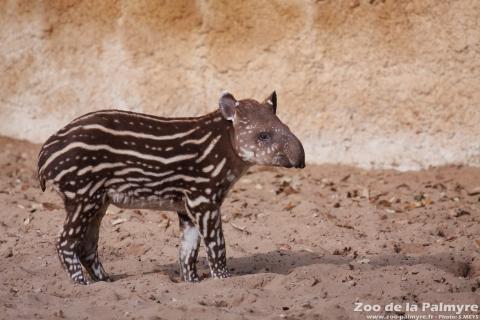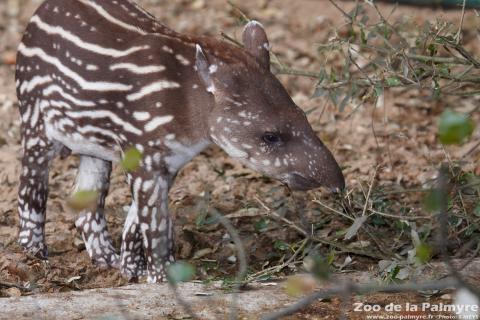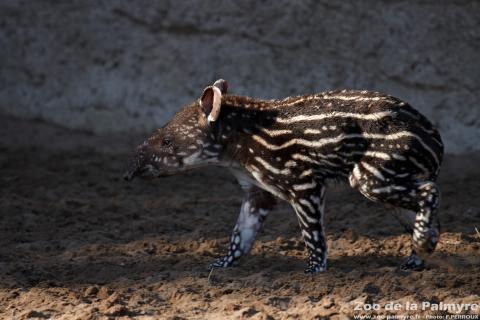Lowland Tapir

Lowland Tapir

-
Class
Mammalia -
Order
Perissodactyla -
Familly
Tapiridae
-
 1.91–2.42m
1.91–2.42m -
 180–300kg
180–300kg -
 about 13 months
about 13 months -
 1
1 -
 30 years
30 years
-
Diet
vegetarian (fruit, leaves, aquatic plants, grasses...) -
Habitat
tropical forest -
Range
South America (Guyana, Venezuela, Colombia, Bolivia, Ecuador, Peru, Paraguay, Brazil, Argentina) -
 This species is part of a European Breeding Program
This species is part of a European Breeding Program
-
Population in the wild
En diminution -
IUCN REDLIST status

There are 4 tapir species. The Lowland Tapir has the greatest range, embracing 11 countries.
Females are larger than males and give birth to one young after a pregnancy of about 13 months. The stripes and light spots of the baby’s coat camouflage it perfectly in vegetation, but these dim at about the age of 6 months. Adult fur is a uniform browny-black.
One of the tapir’s most striking physical features is the end of its snout, where its nose and upper lip form a trunk. Highly mobile and sensitive, this allows the animal to smell food and grab leaves and branches. Tapirs’ sense of smell and hearing are highly developed but their eyesight is rather poor.
Tapirs, largely nocturnal, are shy and silent and thus difficult to spot in their natural environment. They are also excellent swimmers They go into water to get rid of parasites and to avoid land predators such as jaguars.
Tapirs are endangered because of the destruction and fragmentation of their habitat but most of all because of the hunt for their meat, either to eat or sell.

